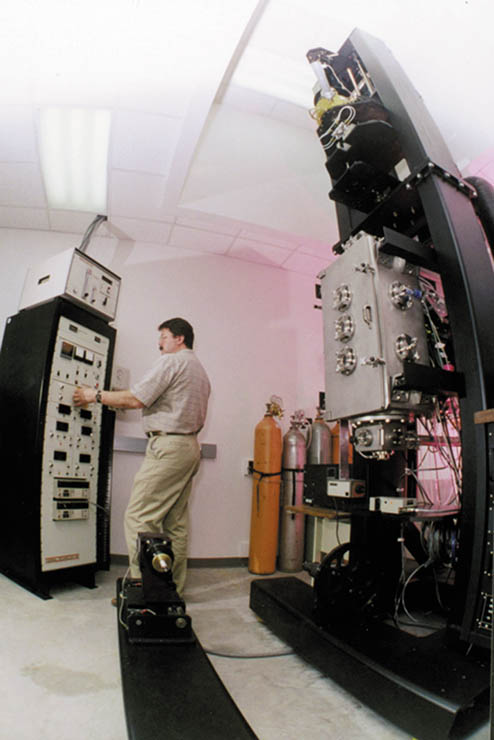Optical Fiber Protection
The NASA Small Business Innovation Research (SBIR) Program provided the needed research funds, as well as technology, for the development of a technique to protect sensitive strands of optical fiber from harsh environments. This technique has helped fashion products useful in taking strain and temperature measurements, as well as in spotting trace amounts of biological and chemical warfare agents. NASA funds and expertise went into helping F&S, Inc., (soon to be named Luna Innovation) of Blacksburg, Virginia, develop ruggedized coatings and coating technologies that are applied in the making of optical fiber.
NASA's requirements prompted F&S to develop a metal coating capability specifically for space-based applications of optical fiber sensors. The unique and demanding performance required from the space-rated optical fiber led to a novel metal coating technique developed by F&S: on-line sputtering of very thin metal coatings onto optical fiber during production.
The F&S optical fiber fabrication facility and various coating practices have enabled the company to make specialty optical fiber with custom designed refractive index profiles and protective or active coatings. The company has demonstrated sputtered coatings using metals and ceramics, and combinations of both. Also, the company has developed ways to apply thin coatings of specialized polyimides formulated at Langley Research Center. With these capabilities, F&S has produced cost-effective, reliable instrumentation and sensors able to withstand temperatures of up to 800 degrees centigrade. Yet another outcome of its research is the demonstration of sapphire fiber-based sensors capable of performing at temperatures above 1500 degrees centigrade.
F&S has adapted the same sensing platforms to provide the rapid detection and identification of chemical and biological agents with parts-per-trillion sensitivities. More sensitive than devices now used, the firm's fiber optic "biosensor" also does the job far more quickly.
F&S is continuing work with NASA through additional contracts with the Dryden Flight Research Center, as well as Langley. The company is developing flight-worthy systems for physical measurements through Dryden, and work is underway with Langley to develop novel materials in microcomposites, high displacement actuators, and active polymers.
F&S innovations in self-assembled monolayer thin film coatings are being realized. This is a capability with a wide variety of applications. Lightweight, actuated composite structures, for instance, will allow deployment and surface control of large spaceborne and terrestrial optical and electronic receivers. Such equipment could find application for astronomy and communications purposes, at a very reduced cost for fabrication, maintenance, and operation.
F&S has patented optical fiber fabrication techniques, devices, and instrumentation for the physical measurement of strain, temperature, and pressure, as well as chemical and biological detection, explains Michael Gunther, company vice president and co-founder. F&S has also designed and fabricated microelectromechanical systems (MEMS) products. MEMS devices include optical switches, micropumps, and optical interconnects.
Gunther explains that since the company was founded in 1990, worldwide product sales have continued to grow annually. The firm is dedicated to the transition of basic research to cost-effective commercial products.

NASA's requirements prompted F&S to develop a novel metal coating technique.













